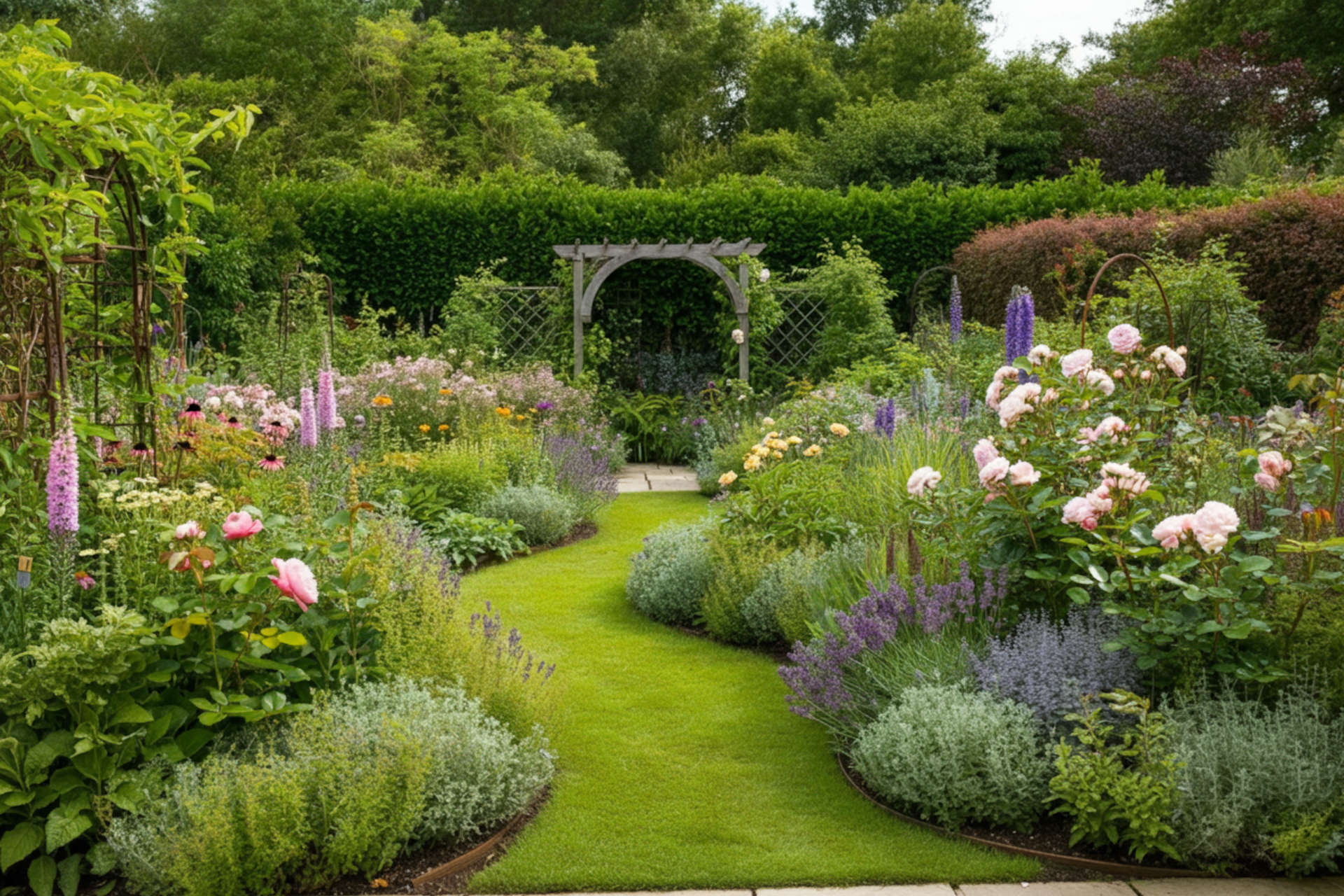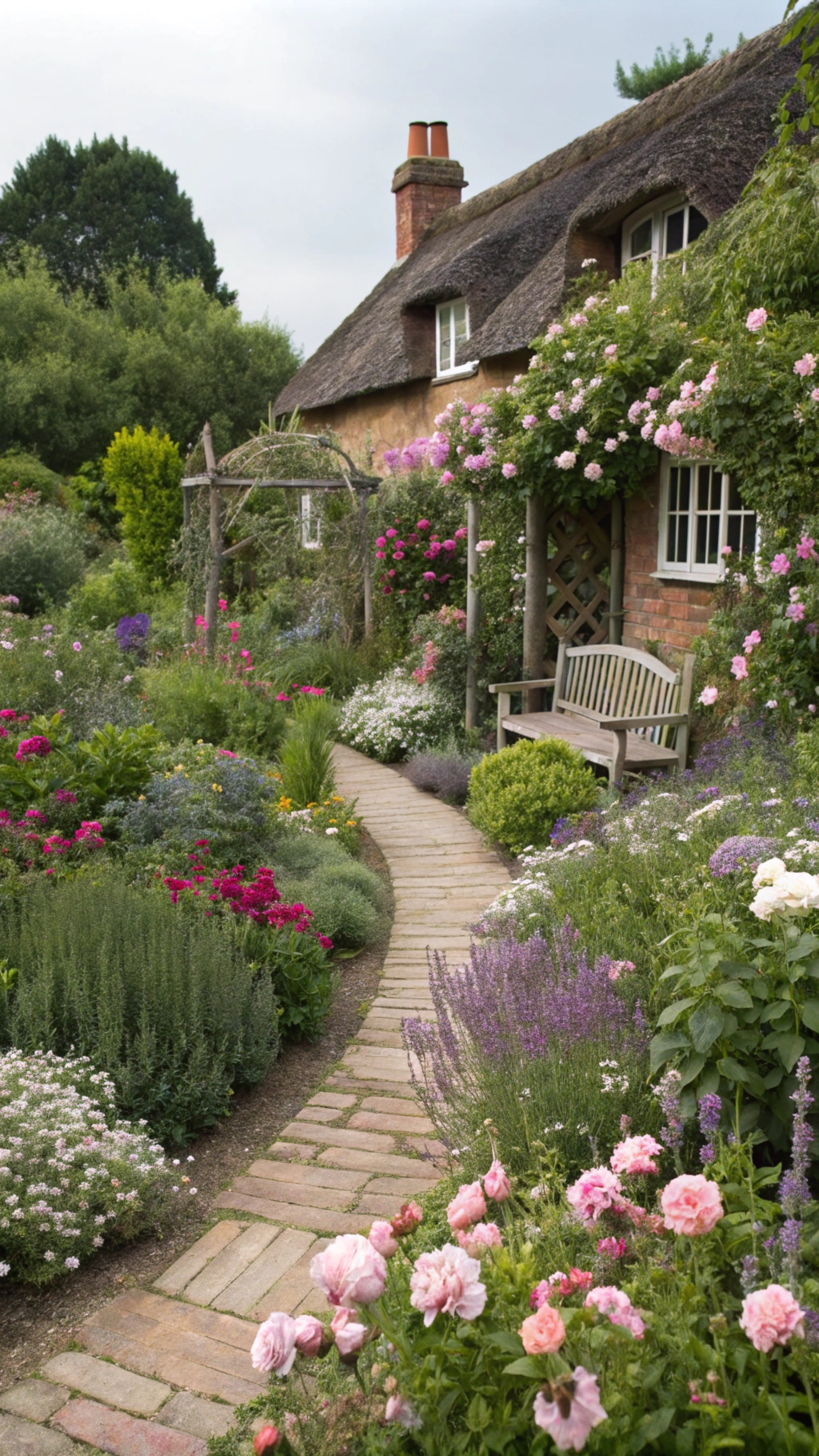11 Best Cut Flower Garden Ideas for Planting
The allure of fresh-cut flowers in your home brings joy and satisfaction. Imagine the delight of walking into a room adorned with vibrant blooms you’ve grown yourself. The fragrance, the colors, and the sense of accomplishment—all these elements come together in a cut flower garden. Whether you have a small backyard, a large landscape, or just a balcony, growing your own cut flower garden is a rewarding endeavor.

Below, we will guides you through 11 stunning cut flower garden ideas, each designed to maximize beauty, functionality, and enjoyment. From classic cottage gardens to modern minimalist designs, there’s something here for every gardener. Let’s look into the world of cut flower gardening and inspire you to create a garden that not only looks beautiful but also provides you with endless arrangements and bouquets.
1. The Classic Cottage Garden

- Description: A timeless design inspired by English cottage gardens, featuring a mix of old-fashioned flowers. Mixed borders with perennials, annuals, and biennials create a natural, informal look. Fragrant flowers like roses, peonies, and lavender add charm. Herbs for beauty and utility complete the design. Plant in drifts and consider succession planting for continuous blooms. Use a circular or winding path for a sense of discovery. Incorporate a rustic bench or trellis for added charm.
- Key Features:
- Mixed borders with perennials, annuals, and biennials.
- Use of fragrant flowers like roses, peonies, and lavender.
- Incorporation of herbs for both beauty and utility.
- Planting Tips:
- Plant in drifts for a natural, informal look.
- Consider succession planting to ensure blooms throughout the season.
- Design Considerations:
- Use a circular or winding path to create a sense of discovery.
- Incorporate a rustic bench or trellis for added charm.
2. The Modern Minimalist Garden

- Description: A sleek and contemporary design focuses on simplicity and clean lines. Geometric shapes and patterns dominate. A limited palette of colors, often monochromatic or with a few complementary hues, creates a modern feel. Tall, architectural plants like ornamental grasses and alliums add height. Plant in rows or blocks for a structured look. Choose plants with interesting foliage as well as flowers. Use raised beds or containers to create height and dimension. Incorporate modern elements like metal or concrete planters
- Key Features:
- Use of geometric shapes and patterns.
- Limited palette of colors, often monochromatic or with a few complementary hues.
- Tall, architectural plants like ornamental grasses and alliums.
- Planting Tips:
- Plant in rows or blocks for a structured look.
- Choose plants with interesting foliage as well as flowers.
- Design Considerations:
- Use raised beds or containers to create height and dimension.
- Incorporate modern elements like metal or concrete planters.
3. The Pollinator Paradise

- Description: If you are looking to attract and support pollinators like bees, butterflies, and hummingbirds then this garden design will suit. Native plants that are attractive to pollinators are key. A variety of flower shapes and colors create “pollinator highways.” Plant in clusters to provide nectar throughout the season. Avoid using pesticides that harm pollinators. Create a central feature like a butterfly bush or hummingbird feeder. Use a mix of sun and shade areas to accommodate different pollinator needs.
- Key Features:
- Use of native plants that are attractive to pollinators.
- Incorporation of a variety of flower shapes and colors.
- Planting in clusters to create “pollinator highways.”
- Planting Tips:
- Choose plants that bloom at different times to provide nectar throughout the season.
- Avoid using pesticides that harm pollinators.
- Design Considerations:
- Create a central feature like a butterfly bush or hummingbird feeder.
- Use a mix of sun and shade areas to accommodate different pollinator needs.
4. The Vertical Garden

- Description: If you are short of space a space-saving vertical design that uses vertical space to grow flowers is perfect for small yards or balconies. Trellises, walls, or hanging baskets are essential. Climbing plants like clematis, morning glories, and nasturtiums thrive in vertical spaces. Vertical planters or wall-mounted gardens add dimension. Choose plants that thrive in vertical spaces and ensure proper support for climbing plants. Use a mix of colors and textures to create visual interest. Incorporate lighting to highlight the vertical garden at night..
- Key Features:
- Use of trellises, walls, or hanging baskets.
- Climbing plants like clematis, morning glories, and nasturtiums.
- Vertical planters or wall-mounted gardens.
- Planting Tips:
- Choose plants that thrive in vertical spaces, such as vining flowers.
- Ensure proper support for climbing plants.
- Design Considerations:
- Use a mix of colors and textures to create visual interest.
- Incorporate lighting to highlight the vertical garden at night.
5. The Cutting Garden

- Description: A pure cutting garden in a dedicated space specifically for growing flowers to cut and bring indoors can be a perfect option. Organized layout with rows or blocks of flowers ensures easy access for cutting and maintenance. Long-stemmed flowers like dahlias, zinnias, and sunflowers are ideal. Plant in a sunny, well-drained location. Consider succession planting to extend the cutting season. Use paths or stepping stones for easy access. Incorporate a small shed or storage area for tools and vases.
- Key Features:
- Organized layout with rows or blocks of flowers.
- Easy access for cutting and maintenance.
- Use of long-stemmed flowers like dahlias, zinnias, and sunflowers.
- Planting Tips:
- Plant in a sunny, well-drained location.
- Consider succession planting to extend the cutting season.
- Design Considerations:
- Use paths or stepping stones for easy access.
- Incorporate a small shed or storage area for tools and vases.
6. The Edible Flower Garden

- Description: An edible garden combines beauty with utility and feature not only flowers for the vase but also for the cooking pot. Edible flowers like nasturtiums, pansies, and calendula add flavor and aesthetic appeal. Herbs and vegetables with edible flowers create a visually appealing garden. Choose flowers that are safe to eat and have a pleasant flavor. Plant in a sunny location with well-drained soil. Create a central feature like a herb spiral or raised bed. Use a mix of colors and textures to create a visually appealing garden.
- Key Features:
- Use of edible flowers like nasturtiums, pansies, and calendula.
- Incorporation of herbs and vegetables with edible flowers.
- Aesthetic appeal with a focus on food and drink garnishes.
- Planting Tips:
- Choose flowers that are safe to eat and have a pleasant flavor.
- Plant in a sunny location with well-drained soil.
- Design Considerations:
- Create a central feature like a herb spiral or raised bed.
- Use a mix of colors and textures to create a visually appealing garden.
7. The Water-Wise Garden

- Description: A low-maintenance and water-efficient garden design is perfect for drought-prone areas. Drought-tolerant plants like lavender, yarrow, and coneflowers are key. Incorporation of mulch and drip irrigation reduces water usage. Aesthetic appeal focuses on texture and form. Choose plants adapted to your local climate. Group plants with similar water needs together. Use gravel or stone paths to reduce water usage. Incorporate a rain garden or water-collecting feature.
- Key Features:
- Use of drought-tolerant plants like lavender, yarrow, and coneflowers.
- Incorporation of mulch and drip irrigation.
- Aesthetic appeal with a focus on texture and form.
- Planting Tips:
- Choose plants that are adapted to your local climate.
- Group plants with similar water needs together.
- Design Considerations:
- Use gravel or stone paths to reduce water usage.
- Incorporate a rain garden or water-collecting feature.
8. The Container Garden

- Description: A versatile design that uses containers to grow flowers is ideal for small spaces or renters. A variety of containers, from pots to hanging baskets, provide flexibility. Mix of annuals, perennials, and topicals can ensure year-round interest. It also provides easy maintenance and flexibility to move plants as needed. Choose containers with good drainage and use high-quality potting mix. Create a theme or color scheme for the container garden. Incorporate vertical elements like trellises or stakes.
- Key Features:
- Use of a variety of containers, from pots to hanging baskets.
- Mix of annuals, perennials, and tropicals.
- Easy maintenance and flexibility to move plants as needed.
- Planting Tips:
- Choose containers with good drainage.
- Use a high-quality potting mix.
- Design Considerations:
- Create a theme or color scheme for the container garden.
- Incorporate vertical elements like trellises or stakes.
9. The Seasonal Garden

- Description: If you are look to provide provide blooms throughout the year, with a focus on seasonal changes then a seasonal garden is the way to go. Use of bulbs, perennials, and annuals that bloom in different seasons ensures continuous blooms. Evergreens provide year-round interest. Aesthetic appeal focuses on seasonal color changes. Plan for succession planting to ensure continuous blooms. Choose plants that thrive in your local climate. Create a central feature like a seasonal centerpiece or focal point. Use a mix of colors and textures to create a visually appealing garden.
- Key Features:
- Use of bulbs, perennials, and annuals that bloom in different seasons.
- Incorporation of evergreens for year-round interest.
- Aesthetic appeal with a focus on seasonal color changes.
- Planting Tips:
- Plan for succession planting to ensure continuous blooms.
- Choose plants that thrive in your local climate.
- Design Considerations:
- Create a central feature like a seasonal centerpiece or focal point.
- Use a mix of colors and textures to create a visually appealing garden.
10. The DIY Cut Flower Garden

- Description: A cut garden layout designed and built by the homeowner, with a focus on personalization and creativity holds much appeal. Use of reclaimed materials and DIY projects adds a personal touch to the finished garden. Unique plant combinations and designs reflect individuality. Choose plants that are easy to grow and maintain. Experiment with different plant combinations and designs. Create a central feature like a DIY trellis or planter. Use a mix of colors and textures to create a visually appealing garden.
- Key Features:
- Use of reclaimed materials and DIY projects.
- Personal touch with unique plant combinations and designs.
- Aesthetic appeal with a focus on creativity and individuality.
- Planting Tips:
- Choose plants that are easy to grow and maintain.
- Experiment with different plant combinations and designs.
- Design Considerations:
- Create a central feature like a DIY trellis or planter.
- Use a mix of colors and textures to create a visually appealing garden.
11. The Backyard Oasis

- Description: A garden designed to create a relaxing and inviting outdoor space, perfect for entertaining and relaxation. A variety of flowers, shrubs, and trees create a lush environment. Incorporation of seating areas, water features, and lighting enhances relaxation. Aesthetic appeal focuses on relaxation and enjoyment. Choose plants that are low-maintenance and easy to care for. Plant in a sunny location with well-drained soil. Create a central feature like a fire pit or water feature. Use a mix of colors and textures to create a visually appealing garden.
- Key Features:
- Use of a variety of flowers, shrubs, and trees.
- Incorporation of seating areas, water features, and lighting.
- Aesthetic appeal with a focus on relaxation and enjoyment.
- Planting Tips:
- Choose plants that are low-maintenance and easy to care for.
- Plant in a sunny location with well-drained soil.
- Design Considerations:
- Create a central feature like a fire pit or water feature.
- Use a mix of colors and textures to create a visually appealing garden.
